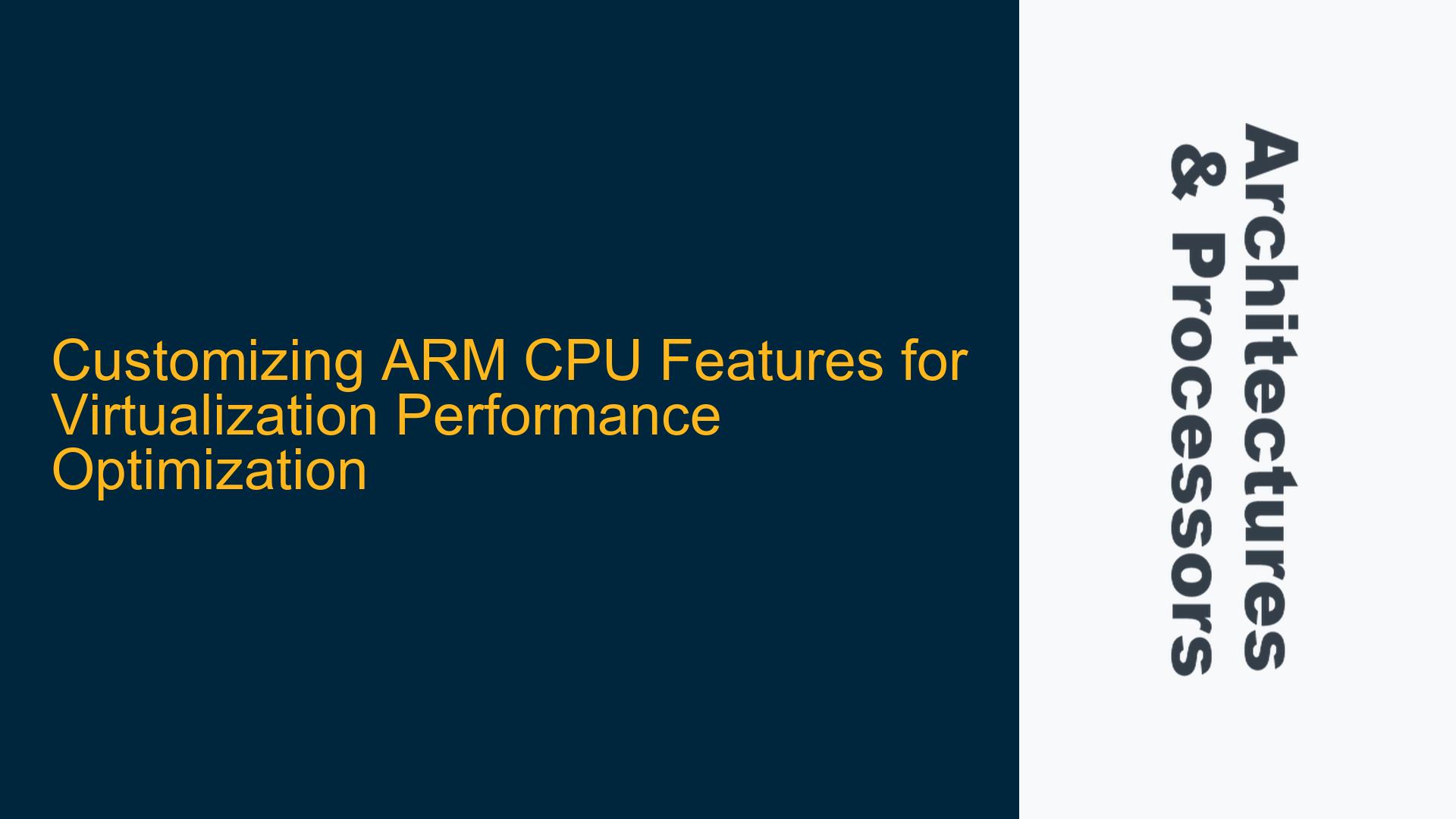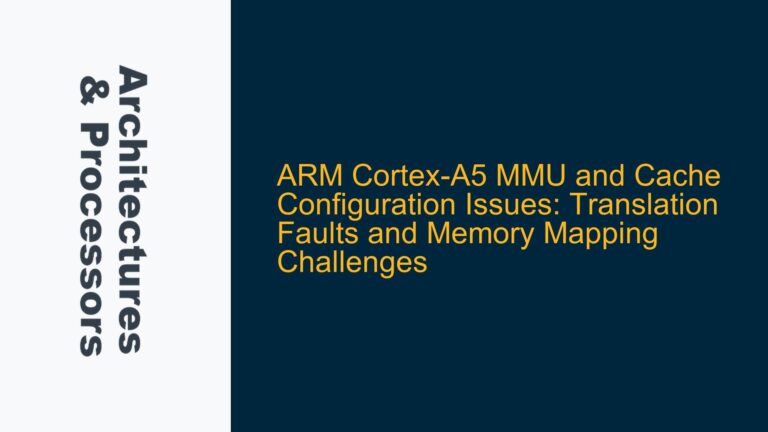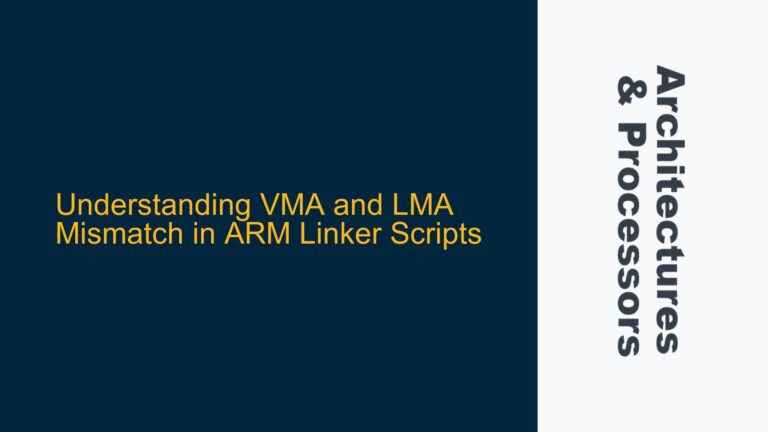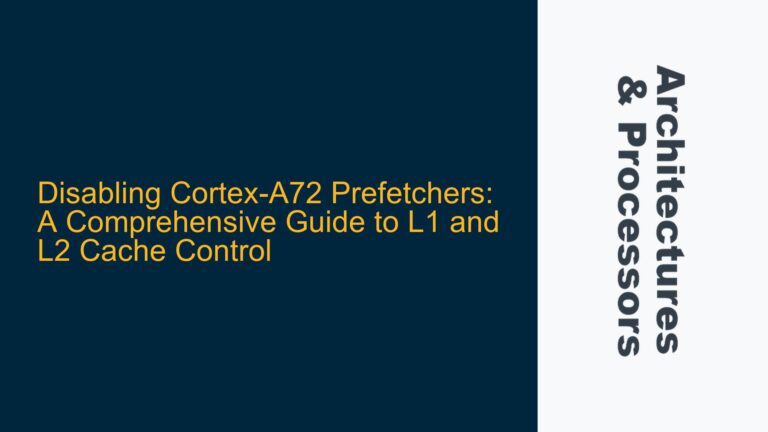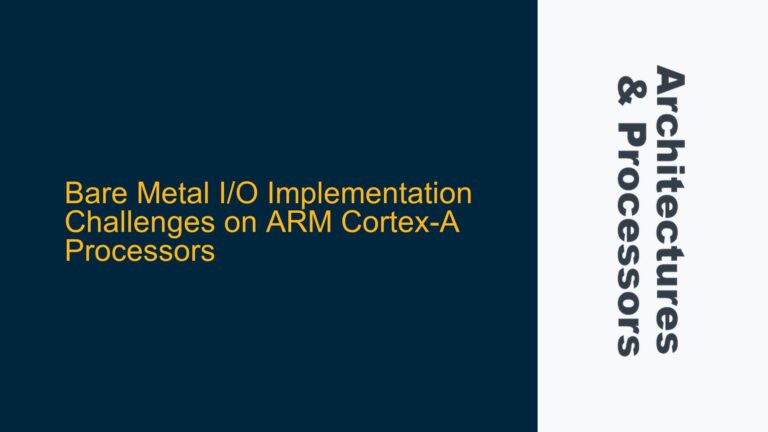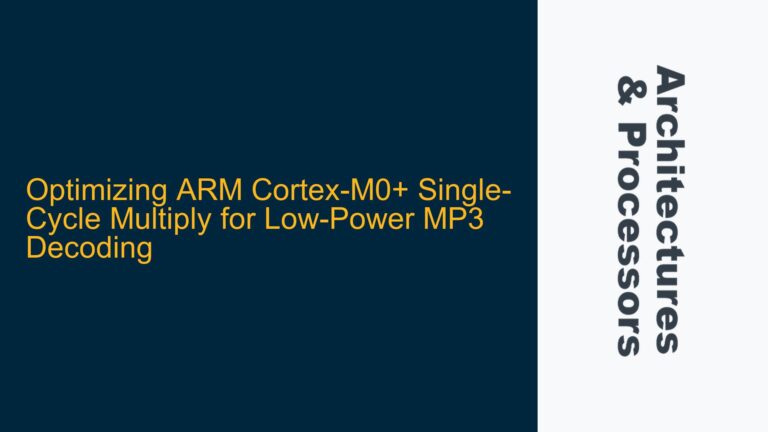ARM Virtualization Extensions and Custom CPU Feature Implementation
ARM architectures, particularly those supporting virtualization, provide a robust framework for hypervisors to manage virtual machines (VMs) efficiently. The ARM Virtualization Extensions, introduced in ARMv7 and significantly enhanced in ARMv8, enable hardware-assisted virtualization by introducing new processor modes, such as EL2 (Hypervisor Mode), and features like stage-2 translation tables for memory virtualization. These extensions allow hypervisors to intercept and manage guest OS operations, ensuring isolation and performance.
However, in certain virtualization scenarios, the default CPU features provided by ARM architectures may not fully align with the performance or stability requirements of specific workloads. For instance, in x86-based systems, hypervisors like Hyper-V on KVM often customize CPU features to optimize VM performance. Similarly, ARM-based hypervisors can benefit from custom CPU feature implementations to address unique challenges, such as reducing virtualization overhead, improving interrupt handling, or enhancing memory management.
Custom CPU features in ARM virtualization typically involve modifying or extending the behavior of existing hardware features or introducing new functionalities at the hypervisor level. This customization can be achieved through a combination of firmware modifications, hypervisor-level software changes, and leveraging ARM’s coprocessor interface for feature control. For example, a hypervisor might implement custom cache management policies to reduce contention between VMs or introduce new instructions to accelerate specific virtualization tasks.
The process of customizing CPU features requires a deep understanding of the ARM architecture, including the privilege levels, exception handling mechanisms, and memory management units (MMUs). Additionally, it involves careful consideration of the impact on system stability, security, and compatibility with existing software stacks. The following sections explore the possible causes of performance bottlenecks in ARM virtualization and provide detailed troubleshooting steps to implement custom CPU features effectively.
Hypervisor Overhead and Inefficient Resource Utilization
One of the primary challenges in ARM virtualization is the overhead introduced by the hypervisor when managing multiple VMs. This overhead can manifest in various forms, such as increased latency in interrupt handling, inefficient use of CPU caches, or suboptimal memory management. These issues often stem from the default behavior of ARM’s virtualization extensions, which may not be tailored to specific workload requirements.
For example, ARM’s Generic Interrupt Controller (GIC) is designed to handle interrupts efficiently in a non-virtualized environment. However, in a virtualized setup, the hypervisor must intercept and route interrupts to the appropriate VM, which can introduce additional latency. Similarly, the default cache management policies in ARM processors may not account for the shared nature of resources in a virtualized environment, leading to cache contention and reduced performance.
Another potential cause of inefficiency is the lack of fine-grained control over CPU features at the hypervisor level. While ARM provides mechanisms for enabling or disabling certain features, such as virtualization extensions or advanced SIMD (NEON) support, these controls are often binary and do not allow for nuanced customization. This limitation can result in suboptimal resource utilization, particularly in scenarios where specific features are only required for certain VMs or tasks.
To address these issues, hypervisors can implement custom CPU features that optimize resource utilization and reduce overhead. For instance, a hypervisor might introduce a custom interrupt handling mechanism that minimizes latency by directly routing interrupts to the target VM without hypervisor intervention. Similarly, custom cache management policies can be implemented to allocate cache resources dynamically based on VM workload requirements.
Implementing Custom CPU Features for ARM Virtualization
Implementing custom CPU features in ARM virtualization involves a combination of hardware and software modifications. The first step is to identify the specific performance bottlenecks or stability issues that need to be addressed. This identification process typically involves profiling the system under various workloads to pinpoint areas of inefficiency.
Once the bottlenecks are identified, the next step is to design custom CPU features that address these issues. This design process requires a thorough understanding of the ARM architecture, including the privilege levels, exception handling mechanisms, and memory management units. For example, if the bottleneck is related to interrupt handling latency, the hypervisor might implement a custom interrupt controller that bypasses the default GIC and directly routes interrupts to the target VM.
The implementation of custom CPU features often involves modifying the hypervisor’s codebase to introduce new functionalities or extend existing ones. This modification process requires careful consideration of the impact on system stability and security. For instance, introducing a custom cache management policy might require changes to the hypervisor’s memory management code, which could inadvertently introduce vulnerabilities if not implemented correctly.
In addition to software modifications, custom CPU features may also require changes to the firmware or hardware configuration. For example, a hypervisor might need to modify the CPU’s coprocessor registers to enable or disable specific features. These changes must be carefully coordinated with the hardware design to ensure compatibility and stability.
Finally, the custom CPU features must be thoroughly tested to ensure they achieve the desired performance improvements without introducing new issues. This testing process typically involves running a series of benchmarks and stress tests to validate the changes under various workloads. Additionally, the hypervisor must be tested for compatibility with existing software stacks, including guest operating systems and applications.
By following these steps, hypervisors can implement custom CPU features that optimize performance and stability in ARM virtualization scenarios. These customizations can significantly reduce virtualization overhead, improve resource utilization, and enhance the overall efficiency of the system. However, it is essential to approach this process with caution, as improper implementation can lead to system instability or security vulnerabilities.
Detailed Troubleshooting Steps for Custom CPU Feature Implementation
To implement custom CPU features effectively, hypervisors must follow a structured approach that includes profiling, design, implementation, and testing. The first step in this process is to profile the system to identify performance bottlenecks. This profiling can be done using tools like ARM’s Performance Monitoring Unit (PMU), which provides detailed insights into CPU performance metrics such as cache misses, branch mispredictions, and instruction execution rates.
Once the bottlenecks are identified, the next step is to design custom CPU features that address these issues. This design process involves creating a detailed specification of the new features, including their intended behavior, interaction with existing hardware and software components, and potential impact on system stability and security. For example, if the profiling data indicates high interrupt handling latency, the hypervisor might design a custom interrupt controller that reduces latency by directly routing interrupts to the target VM.
The implementation of custom CPU features requires modifying the hypervisor’s codebase to introduce new functionalities or extend existing ones. This modification process must be done carefully to avoid introducing new issues. For instance, if the hypervisor is implementing a custom cache management policy, it must ensure that the policy does not inadvertently cause cache thrashing or other performance issues. Additionally, the hypervisor must ensure that the new features are compatible with existing software stacks, including guest operating systems and applications.
After implementing the custom CPU features, the hypervisor must thoroughly test the changes to ensure they achieve the desired performance improvements. This testing process typically involves running a series of benchmarks and stress tests to validate the changes under various workloads. For example, the hypervisor might run a benchmark that simulates a high-interrupt workload to verify that the custom interrupt controller reduces latency as expected. Additionally, the hypervisor must test for compatibility with existing software stacks, including guest operating systems and applications.
In conclusion, implementing custom CPU features in ARM virtualization scenarios requires a structured approach that includes profiling, design, implementation, and testing. By following this approach, hypervisors can optimize performance and stability, reducing virtualization overhead and improving resource utilization. However, it is essential to approach this process with caution, as improper implementation can lead to system instability or security vulnerabilities.
